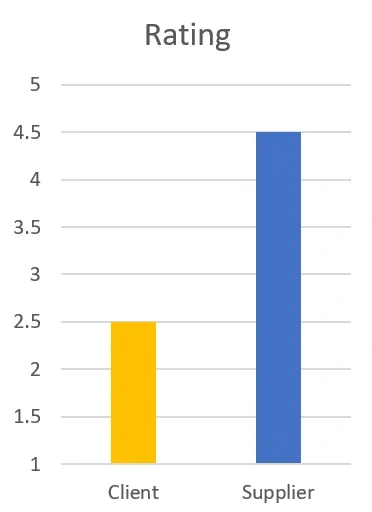Introduction
There is a powerful phrase that is often quoted in supplier relationship management, “you don’t know what you don’t know”. This refers to those issues that are out of range of your vision and thus go untreated. Over time these can grow and totally derail even the strongest long-term IT provider relationships.
The Self-Assessment Approach
One process to use is asking a supplier to undertake a self-assessment, and compare the results with the client team rating of the engagement or relationship. What you are looking for are large gaps in perception, as often these indicate where the blind spots are located.
Interpreting Perception Gaps
So if the client rating of the provider is low, but the sell-assessment is high (see example bar chart below), this can indicate that there is a lack of awareness at the supplier about the underlying issues. It may also show that that the client may not have communicated this to the service provider. This can occur where the client does not want to offend the supplier team and feel it may hinder the day-to-day relationship, so the client team remain silent about the issues, or only hint obtusely at them!
The Role of Evaluations in Bridging Gaps
A formal evaluation provides an outlet for this feedback, allowing for a less passionate and thoughtful response. Sometimes the assessors may be guaranteed anonymity as part of the survey process, so they are able to express more directly how they feel about the engagement. The goal is to reduce the communication gap and ensure close alignment between all stakeholders.
Ensuring Alignment for Success
In conclusion, leveraging formal evaluations with self-assessments in supplier relationship management can help uncover hidden issues and perceptual gaps. By fostering an environment where candid feedback is encouraged and valued, companies can strengthen their relationships with suppliers and align their efforts more effectively. This, in turn, enhances collaboration and overall success for all parties involved. It’s not just about finding issues; it’s about proactive communication, bridging understanding, and working together for better results.
Click here for an article on the role of supplier evaluations in optimizing IT relationships


